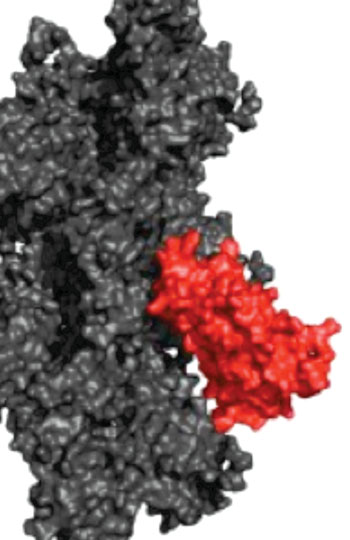Actin-Binding Surface on Vinculin Mediates Mechanical Aspects of Cell Movement
By LabMedica International staff writers
Posted on 07 May 2014
A team of cell biologists has obtained data that shows how two proteins, vinculin and actin, function in concert to regulate cell morphology, motility, and mechanotransduction (the conversion of mechanical signals into electrical or chemical signals) and play a critical role in metastasis.Posted on 07 May 2014
Vinculin is a cytoskeletal scaffold protein essential for embryogenesis and cardiovascular function. It localizes to focal adhesions and adherens junctions, where it connects cell surface receptors to the actin cytoskeleton. While vinculin interacts with many adhesion proteins, its interaction with filamentous actin regulates cell morphology, motility, and mechanotransduction.

Image: Proteins actin and vinculin bind together at a site identified by researchers at the University of North Carolina. The interaction of these proteins plays an important role in cell movement (Photo courtesy of the University of North Carolina).
Investigators at the University of North Carolina (Chapel Hill, USA) used negative-stain electron microscopy, discrete molecular dynamics techniques, and mutagenesis to develop a new model to explain the interaction between vinculin and actin. A major breakthrough in this effort was the development of mutated versions of vinculin that disrupted the actin/vinculin interaction in specific and traceable fashion.
Results published in the April 2014 online edition of the journal Structure revealed that actin-binding deficient vinculin variants expressed in vinculin knockout fibroblasts failed to correct cell-spreading defects and reduced cellular response to external force. These findings highlighted the importance of this actin-binding surface and provided the molecular basis for elucidating additional roles of this interaction, including actin-induced conformational changes that promoted actin bundling.
“Our data suggest that there is a face on the vinculin tail that has been ignored by the previous model, and that it is very important,” said first author Peter Thompson, a graduate researcher at the University of North Carolina. “In your cardiovascular system – your heart and arteries – the cells that form these organs need to stick together tightly. They do these in part by forming cell-to-cell adherens junctions. Vinculin creates a critical physical link between the actin cytoskeleton and these junctions. If you disrupt that, the hypothesis is that cells no longer respond appropriately to force and the organ suffers.”
“Our data supported a unique surface that was important for actin binding,” said senior author Dr. Sharon Campbell, professor of biochemistry and biophysics at the University of North Carolina. “Identification of this actin binding surface on vinculin has enabled us to dissect how this critical interaction controls how cells respond to force and move. This in turn, will help us better understand how dysregulation leads to disease.”
Related Links:
University of North Carolina














